Continuing on in my series looking at the ‘ideal’ figure from 1913-1921, this week lets look at how figure ideals changed from 1913 to 1921.
See Part I, for a range of ideal figures as featured in a Gossard’s corset ad, here; and Part II, for a breakdown of the elements of the ‘ideal’ 1913-1921 figure, here.
Starting in 1913, the ultra-fashionable 1913 figure was very much a carry-on of the extremely slim-hipped 1910 look:
The bust is the full, low, drooping Edwardian mono-bosom that has been in fashion since ca. 1900.
Depictions of un-corseted women in the same catalogue show figures that are somewhat less stylised, but have the same general slim hipped, low busted look, though with separate breasts, rather than a monobosom:
The biggest change in the fashionable silhouette of the 1910s happened between 1913 and 1914. At the end of 1913 we see the very beginnings of the change: hips were widening, and the silhouette was changing from ‘a snake with a boob’ (as a friend of mine calls it), to a very slender hourglass.
By mid 1914, corset advertisements were showing a pronouncedly more ‘natural’ (at least for most women) silhouette, with a definite curve to the hips, and the beginnings of a bust division, although the overall look was still extremely slender:
This matched the slender, but widening, skirts of 1914. Note how low the bum is in these fashion plates:
Note also the level of the waist, which ranges from the natural waist, to a slightly raised waist, matching the fashionable ’empire’ silhouette.
This is the main style of the 1914-1921 period, and the silhouette that the corsets the Scroop Rilla Corset is based on was intended to achieve.
The look for 1915 is very similar: slightly curvier hips, a slightly raised waist.
There was always variation in what was shown in advertisements, like these two from early 1915, which, despite advertising updates in style and silhouette, continue to show quite slender hips.
Interestingly, despite the fact that the change in silhouette to a slightly curvier style pre-dates the start of WWI, some British advertisers and corset sellers, such as Royal Worcester, dubbed the new shape the ‘the Military Vogue’, or the ‘the Military Curve’, an appellation that seems hilariously out of sync with the fashions shown in the ad below:
The overall silhouette was certainly widening as the decade progressed, though the skirts in 1915 still fit relatively snugly over the hips:
By 1916 the ‘ideal’ body shape reached the closest to a full hourglass that it would in the 1910s, with a relatively full bust, defined waist, and rounded hips all in evidence:
Starting in 1917, the fashionable silhouette began to show the next major change in shape: the reduction of the bust.
This is a change in body ideal that corsetry could do little about (though there garments meant to reduce and confine the bust, which I will cover in another post), so corset advertisements were slower to reflect the change. Fashion illustrations showing outerwear were another matter entirely. The smaller bust, with less bust-waist definition, is clearly visible in the dresses worn over the corsets (image below thanks to Lauren of Wearing History, who let me photograph some of her magazine collection):
Compare the bust shape above to the decidedly pronounced curve shown on ‘young girls’ in this fashion plate from only a year earlier:
Along with the fashionable bust size reducing, the desirable waist-hip ratio also reduced from the end of 1917 onwards, so that the overall silhouette was more streamlined, with less change between any part of the figure. This meant that, like the early 1910s silhouette, the ‘ideal’ shape at the end of the 1910s had little waist-to-hip difference, but, unlike the early 1910s snake-hips, the heading-into-the-20s ideal body was depicted with a fuller waist, rather than reduced hips:
By 1918 even the ‘Stout’ figure showed only slight bust-waist-hip differentiation:
I think of the change in the ideal body heading in toward the end of the 1910s as the beginnings of the cult of youth. No more was the matron & mother the ideal figure: instead the young, just out of her teens, girl, was the desired body model.
Societally, this makes sense. Particularly in the British Empire, young women were in the workforce for the first time, and consequently had more disposable income than they ever had had before, making them a market force that should be focused on, and catered to. Declining birthrates across the Western world in the early 20th century meant that children were more important to their parents, and consequently, more likely to be spoiled. At the same time, many youths never made it to proper adulthood due to the war, so idealising youth made sense.
The 19teens also gave birth to the fully fledged ‘flapper’ concept, and in the mid teens and 20s the flapper was young: a teenager, not an adult. It was only when the original flappers grew up that the concept came to include women, and not just young girls.
While the desirable body at the end of the 1910s was the young flapper body, it’s important not to confuse it with the extremely straight, androgynous shape that we think of today as the flapper ideal, with no hips, and a completely flat chest. That look did not come into vogue until the mid 1920s, and represents the final, most extreme, ‘flapper’ shape.
At the start of the 20s the vast majority of corset and fashion advertising, and photographs showing noted beauties, depicts a figure with moderate curves, and a still definite and noticeable bust. Many corset models that were launched in 1913-15 (including the PD Marvella, which the Scroop Rilla Corset is based on) were still on sale in 1921, because the silhouette they created was still the fashionable look.
Note the typical flapper bobbed hair and short skirt of the shop assistant, and the still-corseted and curved shape of the model below:
Even when women were wearing undergarments that attempted to flatten and ‘control’ their busts in the early 1920s, fashion allowed a definite, albeit reduced, curve:
By the end of the war, the glorification of youth was complete. The ideal figure was youthful: small busted, small hipped, slender. Corsetmakers touted their corsets ability to create and maintain this figure.
While the overall alteration in the fashionable ideal from the beginning of WWI to the aftermath years isn’t extreme, I still think that the amount of changes that the most-desirable body shape went through, in only 9 years, may be one of the fastest and most significant changes to ever take place in fashion. From full busted and slim hipped, to a gentle hourglass with moderate bust, waist, and hips, through the shrinking of the bust and widening of the waist, ending in a youthful silhouette with slight bust, waist and hip differentiation, its a fascinating change in the fashionable aesthetic, and societal ideals.
Next in the series: Achieving the fashionable look (and staying supported) with a full bust, 1913-1921.

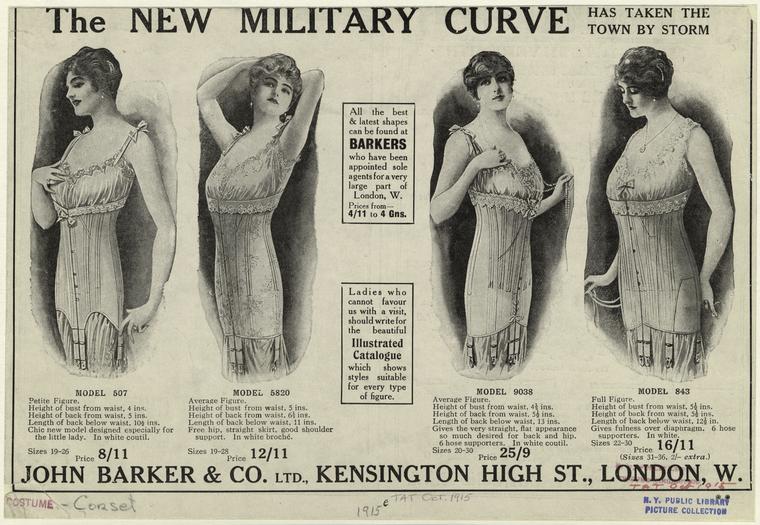
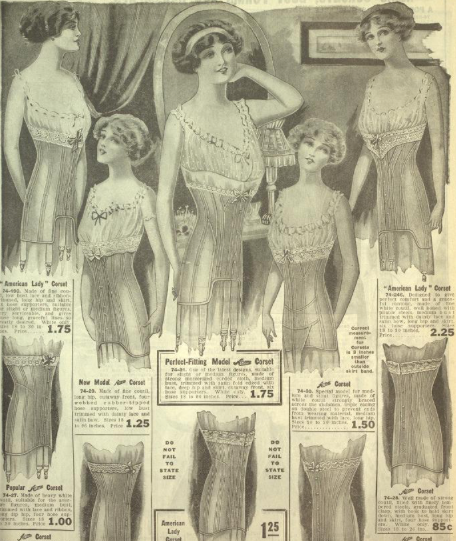
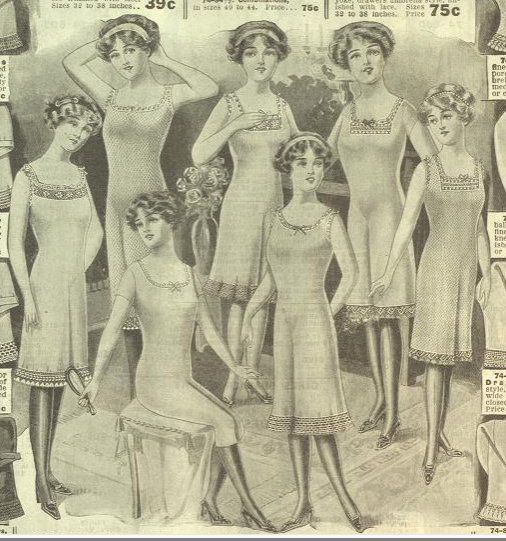

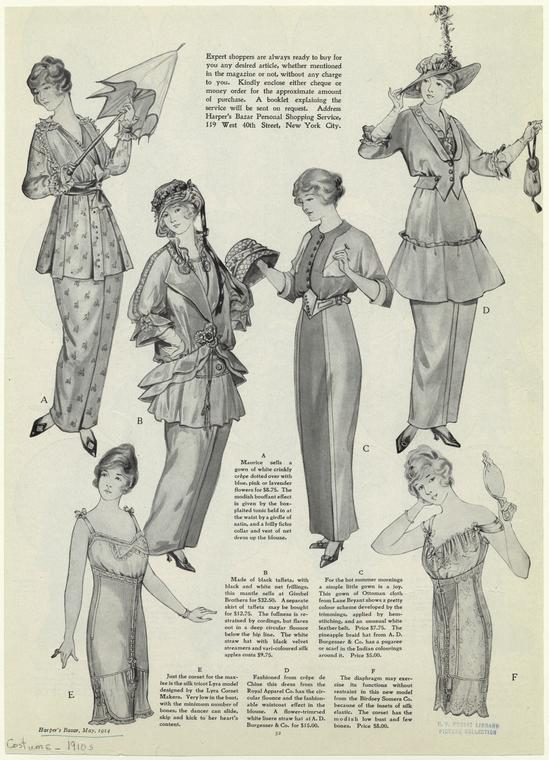
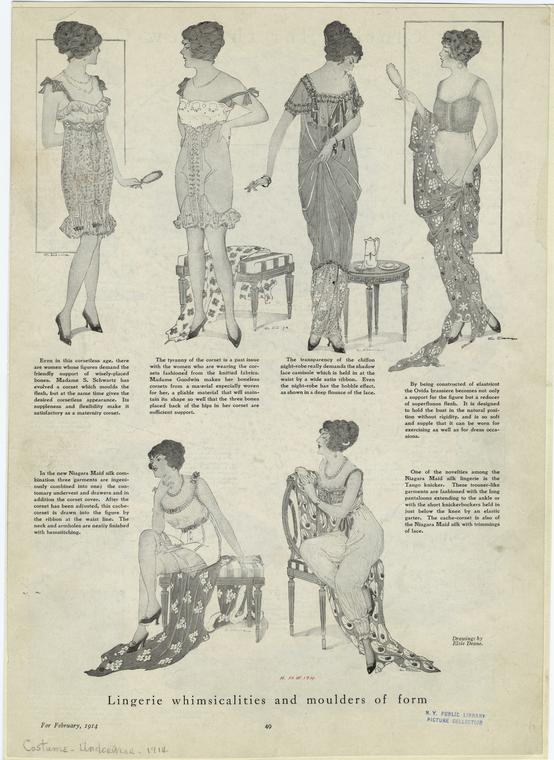
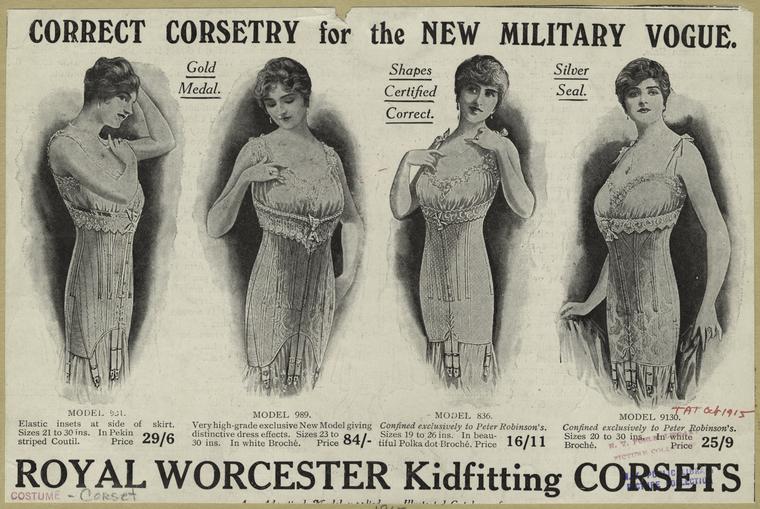
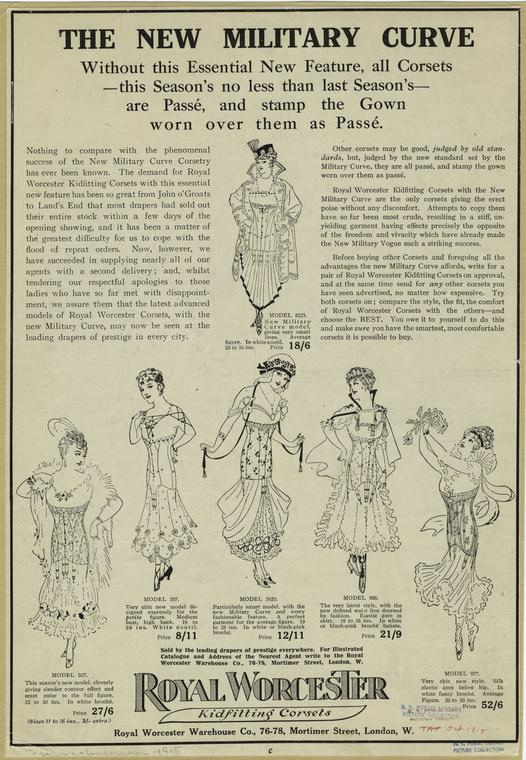
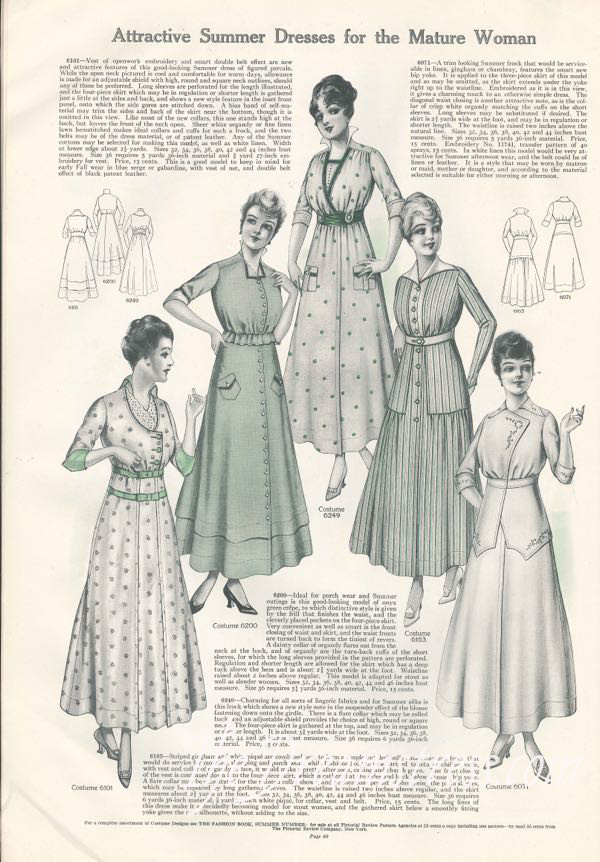
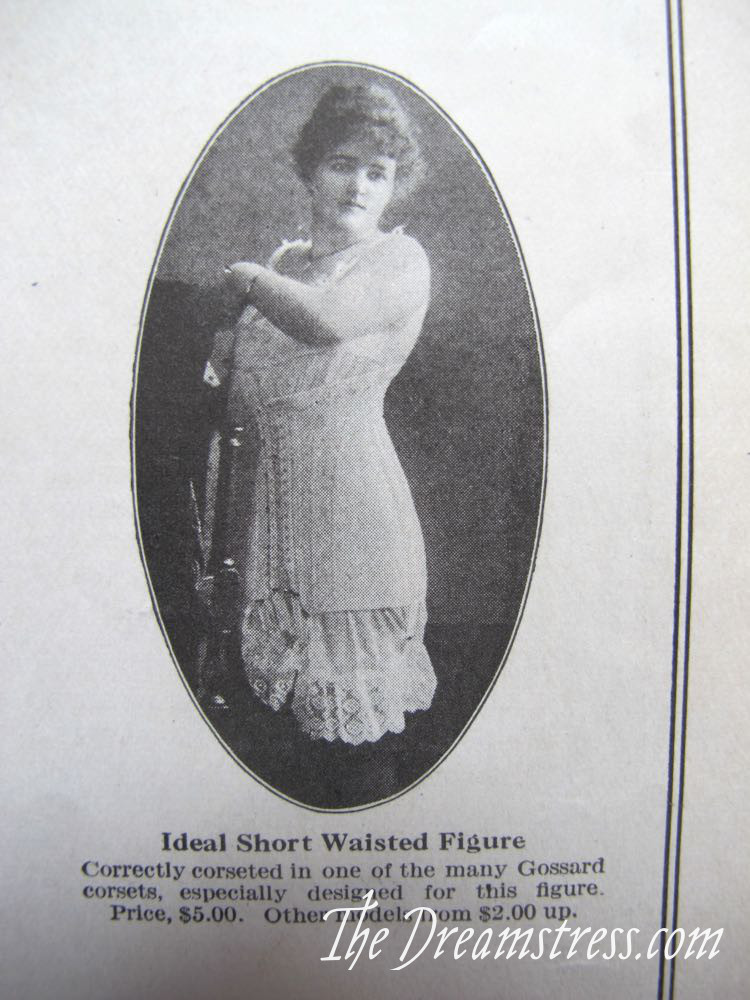

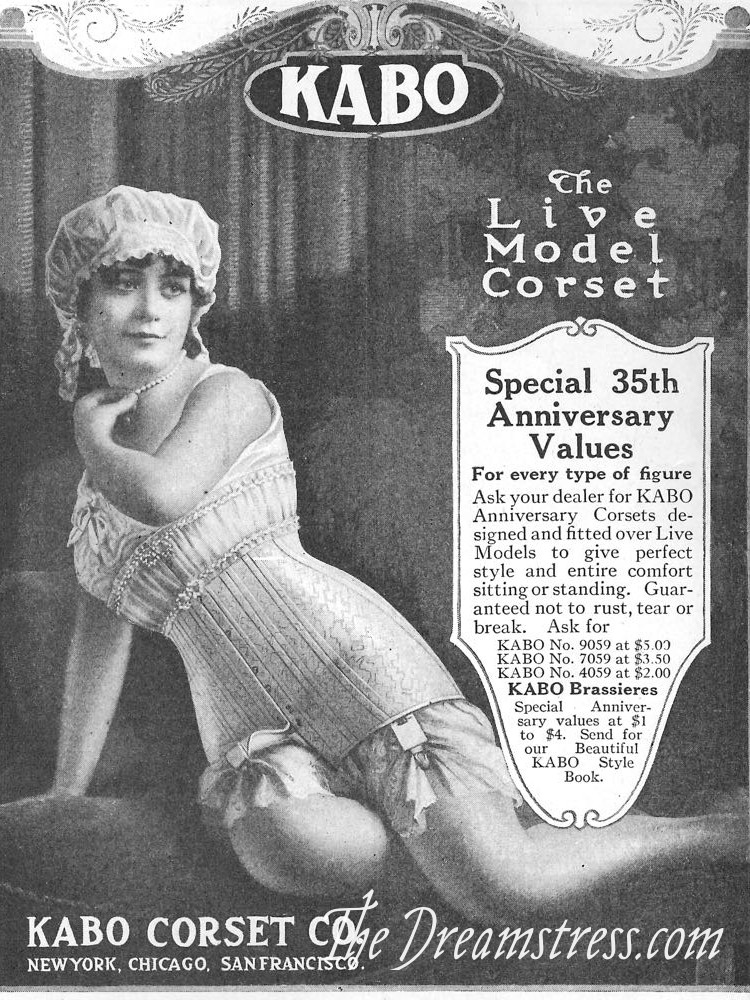
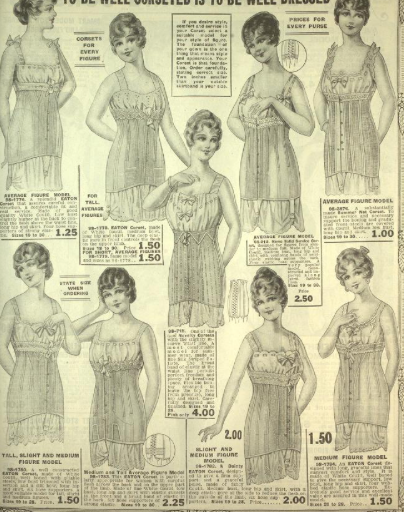
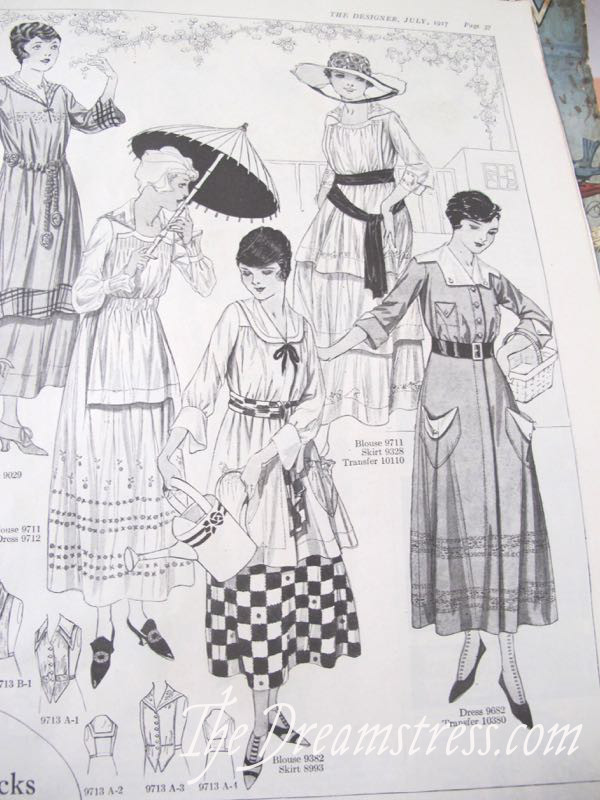

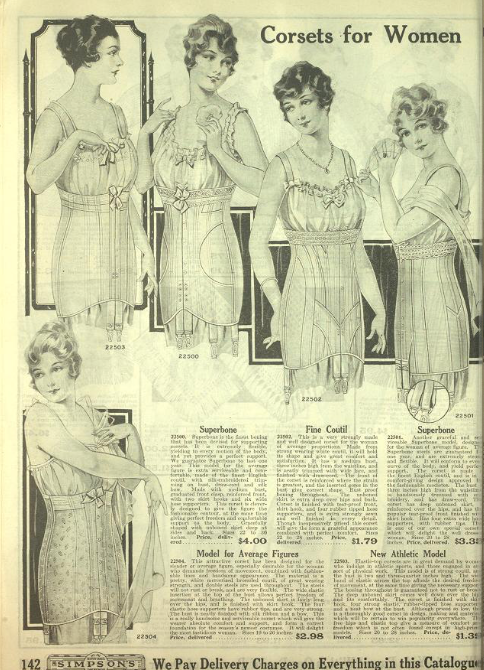
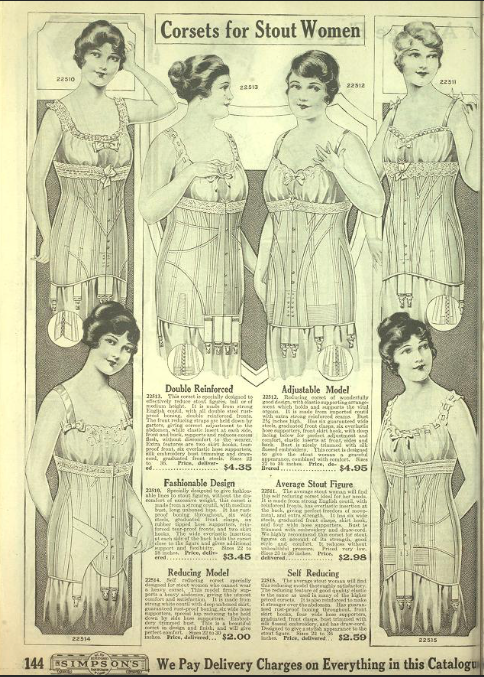
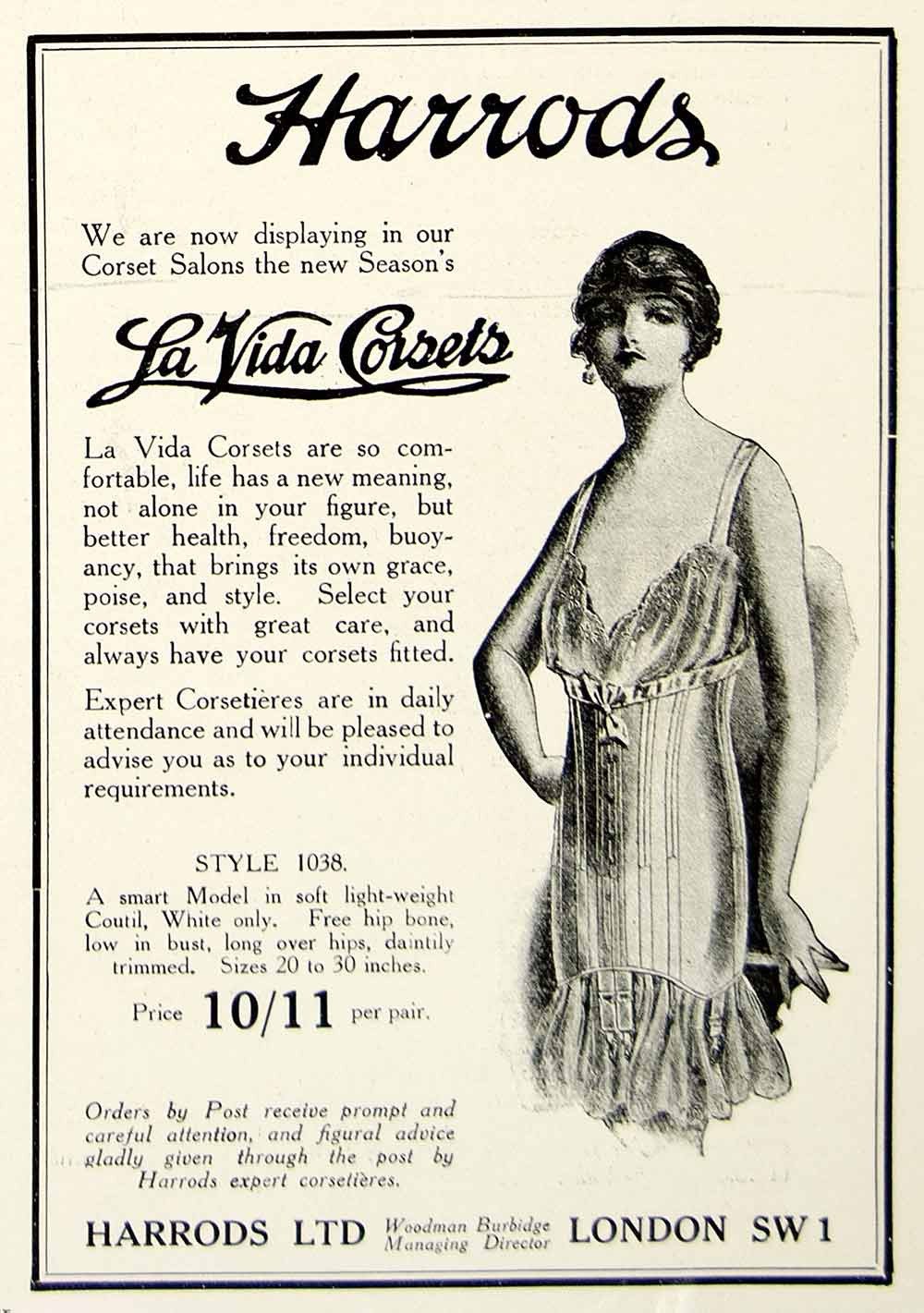
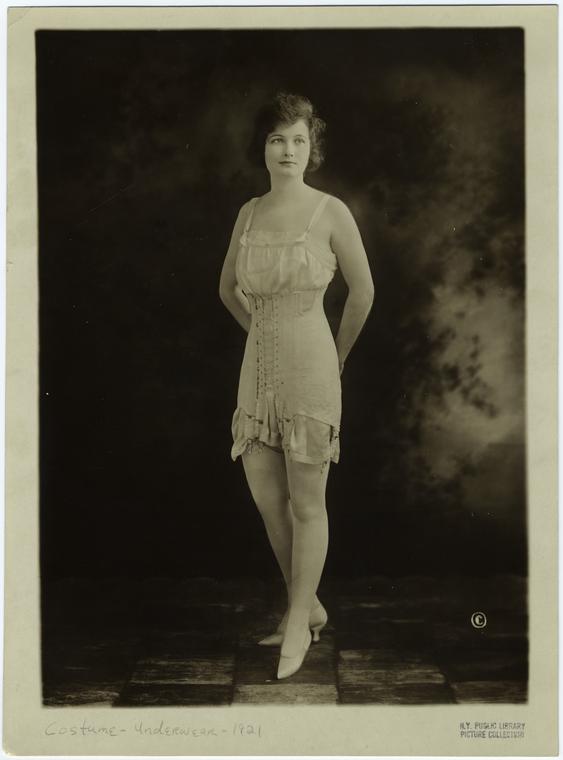
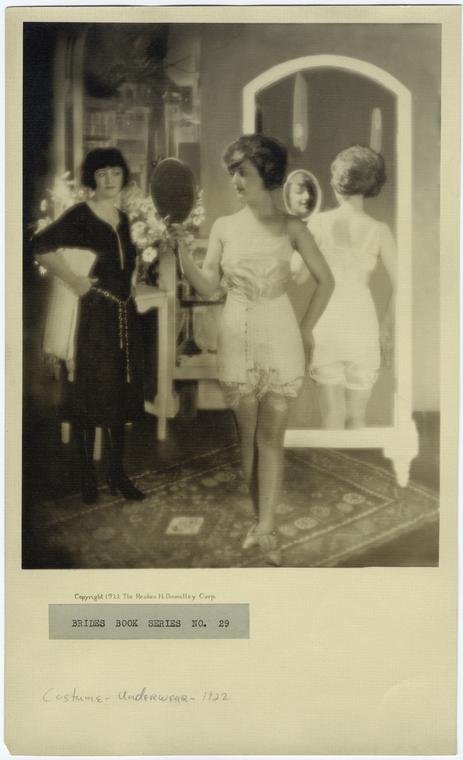

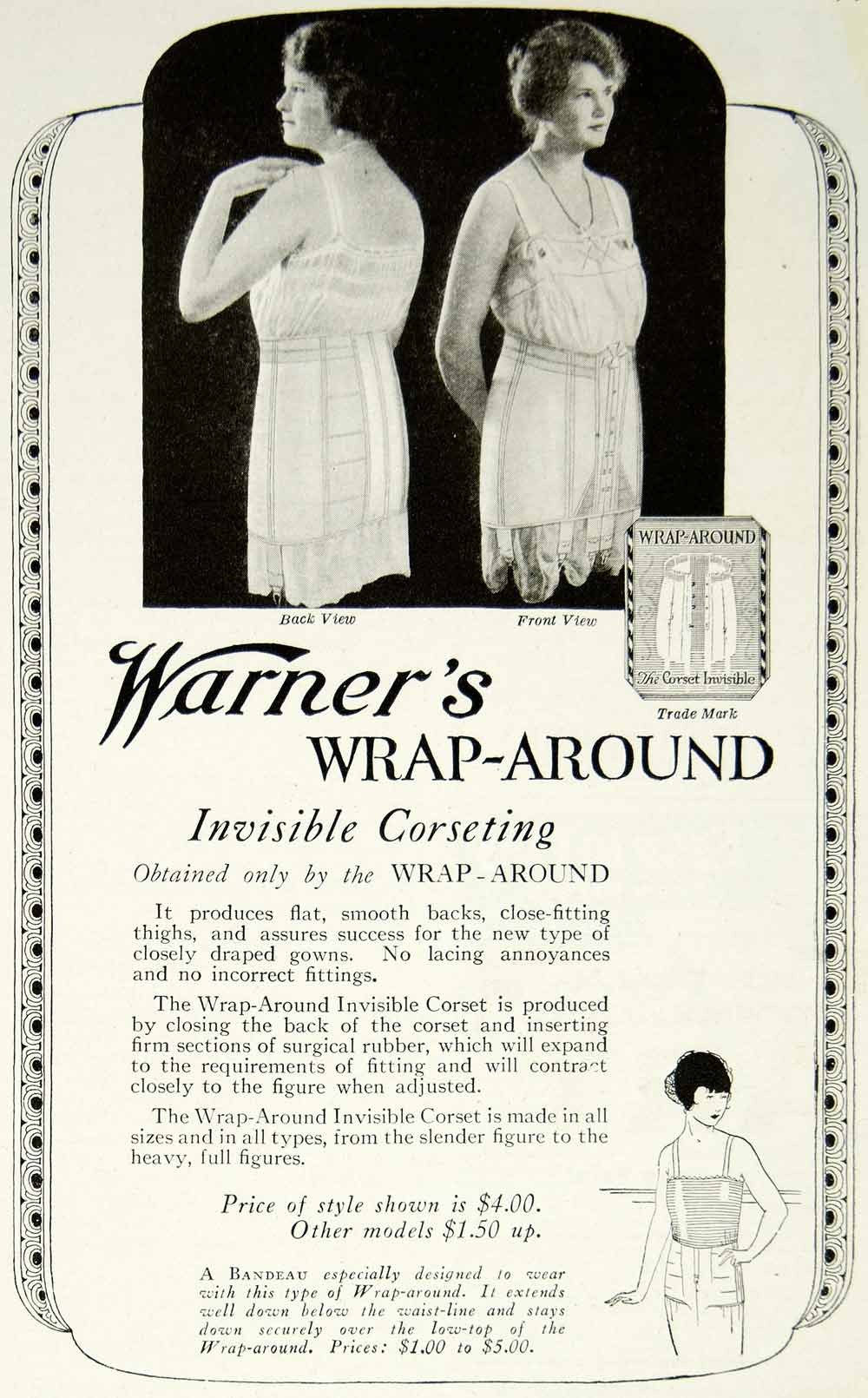
Some of those don’t look like they even hit the lower bust in the pictures and illustrations for the corset models.
My thought, too. Is there no support for those ladies? Do they suffer back pain?
Lovely—wonderful series! The Guardian once did an article on how the body changed over 100 years, and I didn’t get to read it in time. Can’t find the link, either. So the idea of how the ideal body changed over 100 years will just have to do. And I am learning and enjoying it immensely!
Nope. If you are trying to achieve a really low bust, making sure your corset is so far below it can’t provide any support is the way to go!
Extremely educational. Thanks for posting this article series.
You’re welcome! Thank you!
That was, indeed, quite a ride.
Not for me, the 1913 shape, definitely not for me. I feel comfortable in 1915-1916, which is good, because that’s also the timeframe with the most covet in the outer clothes.
I’m looking forward to the next installment!
Fascinating! It must have been slightly worrisome to a young woman in this time period to keep up with the changes – even with her own disposable income! I wonder how closely the majority paid attention to them. When clothes you bought five years ago was so far out of mode, would you feel poor or old or dowdy, or were most people inclined to be more practical than the ads suggest? Especially considering the war?
As a teenager in the early 1960s I used to go shopping with my Mum in Barkers, thank goodness I didn’t have to have to wear any of these! I t was bad enough wearing stockings for a few years to school until Hooray tights came in. Funny how fashion throughout history dictates what shape an ideal woman should be, we should all now be 6ft tall, size 8 with a 32 inch bust. I don’t know anyone like that. This is a really interesting series, I do look forward to the next part, so well researched.
Thank you!
Brilliant series of articles, I am really enjoying learning about this!
Thank you! I’m honoured!